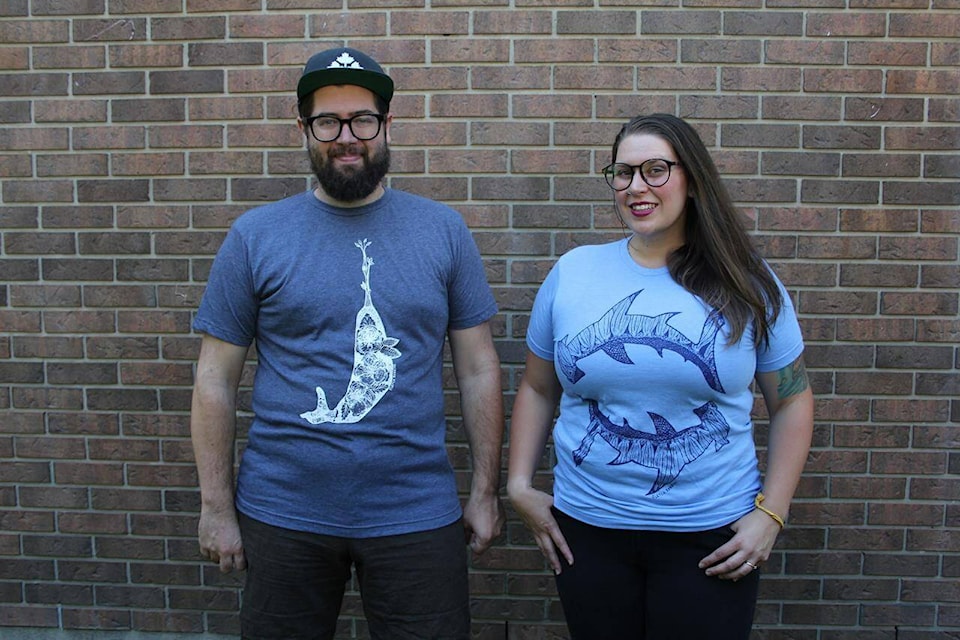Fletcher Gailey-Snell likes to draw t-rexes and triceratops, hammerhead sharks and belugas.
He doesn’t particularly enjoy thinking about taxes.
It’s why the Ottawa man and his wife Ashley Faragher hired a professional to help them understand the tax implications of their small business, Fletch Robbins, which sells Gailey-Snell’s illustrations of dinosaurs and animals in the form of t-shirts, cards and prints.
“It is our side hustle. So even the time it takes to be able to file our taxes properly is not something we necessarily have,” said Gailey-Snell, who holds a full-time job on top of his artistic passion project.
“For us, it’s just the two of us running this thing. So anything we can delegate is helpful, to help us focus on the stuff that’s important to us.”
Gailey-Snell is definitely busy, and he’s not alone. According to a Maru survey conducted in January on behalf on TurboTax Canada, 23 per cent of Canadians reported having a side gig in addition to their primary employment.
Of those, 85 per cent said the rising cost of living was a factor in their decision to pick up secondary employment, according to the survey.
That makes it fair to assume that with inflation hitting new heights in 2022, many Canadians were likely new to the “side hustle” game — and just as unsure of the tax implications as Gailey-Snell was when he started his business.
In fact, Emily Verrecchia, a tax expert with TurboTax Canada, said questions related to self-employment and gig work were among the most common questions she heard from clients last year.
“I personally see it a lot,” she said.
“I think the best advice I could give for anyone who’s doing this for the first time is organization. If you can stay on top of everything that’s happening around your business, even if it’s just taking notes on things you spend money on, that can really help you when tax season is on your door.”
While side hustles can vary — from tutoring to freelance writing to cake decorating — Verrecchia said it’s important to keep track of income and expenses because including your side hustle on your tax return is mandatory.
“There may be those people out there who think ‘oh, this is just a hobby,’” Verrecchia said.
“But as soon as you start to charge for your service, there is an exchange there and a realization of revenues. So you do have to report it.”
If your side hustle involves working as a contractor for a big tech company — for example, you’re a driver for Uber — you should get a statement from the company detailing your earnings. However, it’s still your responsibility to report what’s on that statement to the Canada Revenue Agency.
If you’re not a contractor and are truly self-employed, there are a number of free apps available that can help you keep track of revenues and expenses.
The good thing is that there are many expenses you can deduct from your income as a self-employed worker. These include supplies, home office space, even professional development.
“But some deductions only apply to some industries, so I strongly suspect talking to an expert if you’re not sure,” Verrecchia said.
Yannick Lemay, spokesman for H&R Block, said while some people need help to not miss deductions they’re entitled to, others may think they’re entitled to deduct more than they really are.
“For example, to be able to deduct the business use of your home, it needs to be your main place of business, and you need to work there more than 50 per cent of the time,” Lemay said.
“So if you go and do work at the homes of your clients … mobile massages, for example … then you’re not working at your home more than 50 per cent of the time, even though you may do your bookkeeping at your kitchen table.”
Another common pitfall, Lemay said, is that if you’ve switched to being self-employed and don’t have taxes deducted regularly from your paycheque, you will need to start paying your income taxes in installments.
“That first year, the CRA won’t send you a letter because they don’t know yet that you owe them taxes,” Lemay said. “So it’s on you to pay those tax installments during the year, otherwise you’ll pay interest.”
Taking the time to consult a professional can also help you access benefits you’re not even aware you’re entitled to. The Canada Worker’s Benefit, for example, is a refundable tax credit available to Canadian workers — including self-employed workers — earning revenue of $30,000 or more.
For his part, Gailey-Snell fully recommends getting professional advice, even if your side hustle is just getting started or you’re not earning much income yet.
“I remember the first time we hired our tax person to help us, we were surprised at how little money it cost to hire a specialist, and we were amazed how much money they were able to help us get back in things we would just never even think of,” he said.
“They were all things we legitimately can claim against the business, we just never thought of it because it’s not our area.”
—Amanda Stephenson, The Canadian Press
RELATED: Survey says: 1 in 3 Canadians are looking to cash in on a side hustle
